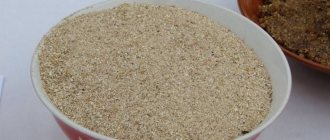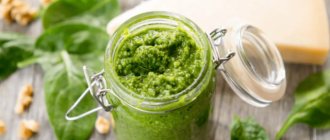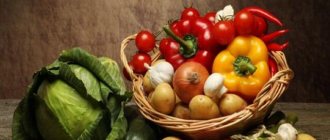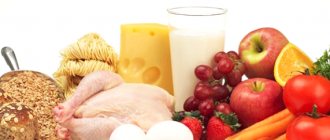Fruitarianism (a subtype of vegetarianism) is a type of diet in which mainly raw plant fruits are consumed, which make up 75% of the total diet.
Adherents of fruitarianism justify this type of nutrition for several reasons:
- Ethical - promoting respect for the ecosystem as a whole and for plants as its individual representatives.
- Nutritional – as a way to reduce calories consumed, normalize weight and lose weight, detoxify.
- Evolutionary - based on the (not scientifically substantiated) assertion that humans are frugivorous by nature.
According to adherents, fruitarianism also helps to become more friendly, get rid of food addiction, strengthen the psyche, immunity, improve brain activity and lose weight.
Among the significant advantages is saving time due to the absence of the need to prepare food.
Fruitarian principles
Ideally, only raw fruits should be eaten.
Sometimes it is allowed to include legumes, seeds, and grains in the menu, but provided that it is not necessary to destroy plants to extract these products.
Some adherents of this type of nutrition eat only those fruits that have independently separated from the stalk and fallen to the ground during the ripening process, or under the influence of other factors (that is, they do not pick the fruits themselves).
One of the variations of fruit eating is a diet, in which 80% of the diet is formed from fruits, another 10% each comes from fats and protein. In this case, it is allowed to replace some of the fruit with leafy greens.
Fruitarianism involves following 5 principles:
- Eating one type of fruit per meal. To eat another type of fruit, you need to wait an hour and a half.
- The amount of food is not limited; you need to focus on the feeling of fullness. For the same reason, there are no clear restrictions on the number of meals or the intervals between them.
- With strict fruitarianism, the fruits are consumed raw. Only peeling them is allowed.
- Spices, flavor enhancers and other additives are not used.
- Only organic products grown primarily in the region of residence are consumed.
How to change the power system?
First you need to study the current power system
How many fruits are on the menu? What about vegetables? Greenery? Do you drink coffee? What is the percentage of cooked and unprocessed food? What is the ratio of plant to animal products? Are there products containing sugar and industrial oils on the menu? Do you drink alcohol and in what quantities? Do you smoke? This is also important! Do you consume a lot of products with questionable additives? It is also worth assessing your condition
Bad skin condition? Do you have problems with stool, for example, increased gas formation, constipation? Are you addicted to drugs from the pharmacy? Do you often worry about colds?
It is also worth assessing your condition. Bad skin condition? Do you have problems with stool, for example, increased gas formation, constipation? Are you addicted to drugs from the pharmacy? Do you often worry about colds?
Only after analyzing the whole situation can you see the big picture. And understand whether you are eating right. By considering these questions, you can understand how to make menu changes more effectively.
The transition period can go differently. In any case, when switching to a cleaner diet, a general cleansing of the body will occur. And the nuances of this cleansing stem from the old lifestyle and way of eating.
Whether nutrition plays a role in recent years or throughout life is difficult to judge. But you can most likely analyze the last ten years properly.
Your task is to figure out for yourself what the basis of your current menu is. What predominated in it - vegetables, grains, meat? And based on this, you will understand how difficult it is and how long it will take to move on.
Authorized Products
The menu is based on fresh fruits: apples, pears, bananas, mangoes, peaches, nectarines, apricots, plums, papaya, pineapple, kiwi, lychees, grapes, cherries, strawberries, blueberries, blackberries, oranges, tangerines, limes, lemons, grapefruit. Dried fruits and goji berries are acceptable.
If desired, the diet may include:
- legumes (beans, lupine, lentils, peas);
- grains (wheat, rice, oats, rye, corn, quinoa, buckwheat, barley, millet, amaranth);
- seeds (sunflower, pumpkin, flax, sesame, hemp, poppy, chia).
Many foods that most people classify as vegetables or other plant groups are fruits and can also be included in a fruitarian's diet.
These include: cucumbers, sweet peppers, zucchini, tomatoes, avocado, coconut, olives, melon, chestnuts, cashews, almonds, walnuts, hazelnuts, Brazil nuts, and eggplants.
Fruitarian menu
Principles of nutrition
Fruitarians are considered people whose daily menu includes at least ¾ of unprocessed raw fruits. The predominant quantities are fruits; there may also be a share of vegetables. Sometimes nuts and grain seeds are used for food.
Let us list the basic principles of such nutrition:
- Fruitarians eat mainly fruits, vegetables, sometimes nuts, legumes, grains, seeds;
- The fruits are eaten without heat treatment, that is, in their raw form;
- They take only those products for which they did not have to kill living plants.
Fruitarianism can be different. That is, people choose for themselves whether they will eat only fruits or whether they will additionally include vegetables, dried fruits, and herbs in their diet. The toughest, but best suited option for fruitarianism is to eat only fruits.
Disadvantages of fruitarianism: possible harm
When consuming fruit alone, adherents of fruit eating may encounter problems such as:
Weight gain
When switching to fruitarianism, there is usually weight loss. But in the future, the process may reverse due to the abundance of sugar in most fruits and their high calorie content (this applies, first of all, to bananas, pears, plums, and dried fruits).
Over time, the body will begin to feel a lack of energy due to the lack of protein and complex carbohydrates (if you give up grains and legumes), which will lead to an increase in fruit consumption and an increase in calorie intake. Moreover, these products are fast carbohydrates and do not provide a feeling of fullness for a long time.
In addition, the lack of fat and protein puts the body into starvation mode:
- metabolism slows down
- digestion worsens,
- gas formation increases,
- intestinal spasms are observed,
- constipation or diarrhea, bloating.
Protein deficiency
Due to a lack of amino acids, not only the muscular system suffers, but also the skin, hair, and nail plates. Chronic fatigue is noted. Physical activity is more difficult, especially strength and high intensity.
Therefore, it is preferable to supplement the diet with seeds, legumes, and grain products.
No healthy fats
Fatty acids are necessary to maintain skin elasticity, brain function, and the hormonal system.
When giving up animal fats, at least partially, you need to replace them with avocados, nuts, and seeds.
Avitaminosis
Not all the elements necessary for the body are found in fruits. Fruit eating is fraught with deficiency of zinc, calcium, iron, vitamin D, group B, E, iodine, selenium.
Diabetes risk
Berries, dried fruits, bananas and other menu components contain a lot of sugar. Their systematic use in large quantities worsens the condition of the pancreas and the absorption of insulin.
If you have diabetes or prediabetes, fruitarianism is contraindicated.
Caries
Sugar and acid, which are rich in apples, kiwi, strawberries, oranges, lemon and other fruits, cause erosion of tooth enamel. The condition of teeth is also worsened by a lack of calcium. Deficiency of this element also negatively affects the skeletal system.
Mood swings
Jumps in glucose levels lead to agitation and a surge of strength being abruptly replaced by irritability, weakness and apathy. Headaches, insomnia, and depression are common. Concentration deteriorates and performance decreases.
Where to start a raw food diet: a guide for a beginner raw foodist
Switching to a proper raw food diet is not for everyone. Why, you ask? Let's figure it out together...
Features of the raw food menu
Before you create a menu, you need to understand how a raw food diet is organized in general.
Grocery list:
- All legumes are suitable, except for beans, which in their raw form do not have a pleasant taste;
- mushrooms collected away from highways and industrial enterprises, but you need to be careful with them: not all of them can be eaten raw, so if you lack experience and knowledge, it is better to stick to champignons;
- greens: arugula, lettuce, parsley, sorrel, dill, celery, marjoram, spinach, cilantro, asparagus, chard, tarragon, basil, rhubarb;
- kelp;
- medicinal herbs: dandelion leaves, quinoa, young nettle;
- drinks: melt water, fresh juices, smoothies, cocktails, juices (naturally, all this is freshly squeezed, not packaged or store-bought);
- nuts (any kind, no exceptions);
- sweeteners;
- sprouted grains and seeds;
- vegetables: pumpkin, cabbage (including sauerkraut), carrots, onions, beets, peppers, Jerusalem artichoke, artichoke, zucchini, squash, cucumbers, tomatoes, watermelon, radish, radish, melon (everyone’s favorite potato is not included in this list, because it cannot be consumed raw);
- cold-pressed vegetable oils - any, but you should give preference to the healthy classic - Extra virgin olive oil;
- seeds;
- spices and seasonings;
- dried fruits (without chemical treatment and drying in ovens, the best option is home-dried, not store-bought);
- fruits (not waxed): cherries, apples, grapefruit, grapes, pears, tangerines, peaches, kiwi, limes, nectarines, lemons, plums, pomegranates, oranges, apricots, quince, persimmons, bananas, avocados, pineapples;
- berries: serviceberry, raspberry, viburnum, strawberry, blueberry, gooseberry, all varieties of currants, sea buckthorn, rose hips, bird cherry, lingonberry, cranberry, blackberry, cloudberry.
There is a special relationship here with honey. Some people use it and call themselves raw foodists. However, this is not entirely true - in a raw food diet it is a prohibited product due to its not very good attitude towards bees.
The main principle: raw foodists eat fresh, plant-based food without heat treatment. It is desirable that all products are environmentally friendly, that is, not genetically modified and in the cultivation of which no chemical fertilizers were used.
The break between meals should be about 4 hours. Portions for lunch and dinner should be impressive. The daily intake of greens to maintain favorable gastric microflora is 800 g. A proper dish should not include more than 3 main ingredients. Maximum - 5.
If the recommended menu contains a product whose taste you don’t like, you don’t need to force yourself to eat it. There will be no benefit from this.
Little life hacks
If there is a lack of proteins, raw foodists need to include as much as possible in the menu:
- legumes;
- kelp;
- nuts;
- sprouted grains;
- sunflower seeds
Some eat fresh, non-industrially processed milk and natural farm eggs (not hatched). This is still acceptable for beginners, but not for experienced ones. After all, these are animal products that are strictly prohibited in veganism.
For calcium deficiency:
- basil;
- young nettle leaves;
- dandelion leaves;
- poppy seeds;
- mung bean;
- almond;
- chickpeas;
- parsley;
- sesame seeds;
- sunflower seeds;
- dill;
- hazelnut;
- garlic.
For iron deficiency:
- legumes;
- greens: asparagus, spinach;
- cereals: buckwheat, oats, rye, wheat;
- vegetables: cauliflower, beets, broccoli, corn;
- nuts;
- seeds;
- dried fruits;
- fruits: pomegranate, plum, persimmon, apples.
If you have a lack of vitamin B12, it is recommended to eat as many champignons as possible, because it is absent in other plant foods.
When switching to this nutritional system, it is worth considering that the body will constantly lack some vitamins and microelements that usually come from food of animal origin. And the use of vitamin complexes and medications is prohibited by the vegan worldview. However, to improve your health, you can always make an exception if at some point a deficiency of calcium or iron is discovered and you have to take medications containing them as prescribed by your doctor. Although with a properly designed menu, problems of this kind can be avoided.
When compiling a diet, it is advisable to rely on an approximate menu of a raw foodist, in which caloric intake, the ratio of dietary fat, and the presence of vitamins and microelements that the body needs are calculated. And first of all, take into account your own life situation. If you are an athlete, look for food to build muscle mass, if you need to lose weight, look for weight loss, etc.
Menu for the day
- Breakfast: 200 ml Orange smoothie.
- Lunch: 1 grapefruit.
- Lunch: 200 ml cucumber gazpacho, 200 g salad of radish, spinach, celery, parsley and dill, 200 ml orange juice.
- Afternoon snack: a handful of walnuts.
- Dinner: 250 g of bean porridge, a small piece of nut marshmallow, 200 ml of fresh berry juice.
The menu for beginners is very important, because most people refuse a raw food diet only because they were unable to switch to it correctly. The main principle here is gradualism. You cannot eat fried meat and hot soups for 30 years, and from tomorrow start eating everything raw.
The transition should be stepwise. On average, it takes 2-3 weeks. This can be seen from the proposed menu, detailed in detail for these 2 weeks by day:
- first, you give up meat and fish and eat raw food for dinner;
- in the second, remove dairy products and eggs, include non-thermally processed foods for breakfast;
- the third week is not scheduled, because it already involves a complete transition to the traditional menu as part of a raw food diet (an example will be given below).
For muscle gain
Don't believe the myths that when eating raw food, muscle gain suffers due to lack of protein. It is also found in plant foods, so this problem will not arise when creating the right menu.
You can focus on the following nutritional plan for one day of a bodybuilder - developed by specialists and successfully tested in practice:
- in the morning, half an hour before breakfast: 200 ml of raw water;
- first breakfast: 200 ml lemon-orange juice;
- charger;
- after 15 minutes: 250 g of green soup, 200 ml of apple smoothie;
- strength training (in an hour);
- immediately after training: 200 ml banana-mango smoothie;
- lunch: 250 g green soup, 200 ml pineapple smoothie;
- afternoon snack: 250 g of green soup, 200 ml of banana and papaya smoothie;
- dinner: 1 avocado, 250 g green salad, 200 ml tomato smoothie.
If there are not enough calories, on days when there are no workouts, you can eat an additional 500 g of watermelon or grapes.
For weight loss
If you plan to constantly adhere to a raw food diet, then this menu is of no use to you - it is better to turn to the traditional one. This nutritional plan is offered by nutritionists to those who want to go on such a diet for a week and then return to their normal diet.
Unlike the classic raw food menu, portion sizes are limited for weight loss, and only one dish is offered for lunch instead of two. In addition, nutritionists do not recommend using sweet fruits like bananas and grapes here, not consuming dried fruits and nuts, and excluding corn.
The result under strict restrictions is minus 3 kg per week.
- Breakfast: green smoothie, which must include basil, parsley and dill.
- Lunch: a handful of almonds.
- Lunch: chickpea hummus, carrot (or beet) salad, but always with garlic. Green smoothie (parsley and dill are constant ingredients).
- Afternoon snack: a mixture of ground poppy seeds, sesame seeds and sunflower seeds.
- Dinner: salad of young nettle and dandelion leaves.
A sample menu for one day with recipes will show you how varied and tasty dishes on a raw food diet can be. If you eat normally, you probably haven’t even heard of them.
Breakfast: green shake
Ingredients:
- 2 bananas;
- 1 mango;
- 1 peach;
- 1 sour green apple;
- 1 orange;
- 50 g spinach;
- 100 ml raw water;
- 3 raspberries;
- 3 mint leaves.
Preparation:
- Cut the fruits, peel and seeds into large pieces.
- Chop the spinach.
- Beat them together in a blender.
- Before serving, garnish with raspberries and mint.
Lunch: orange cream soup
Ingredients:
- 200 g of sprouted (or soaked) green buckwheat;
- 1 carrot;
- 200 ml raw water / cabbage brine;
- undiluted juice of a third of a lemon;
- sea salt;
- 5 sprigs of dill.
Preparation:
- Grate half a carrot.
- Chop the dill.
- Cut the other half of the carrots into large pieces, mix with buckwheat, add water/brine, lemon juice, add salt and pass the whole mass through a blender.
- Before serving, decorate the plate with grated carrots and chopped herbs.
Afternoon snack: green ice cream
Ingredients:
- 300 g avocado;
- 50 ml undiluted lime juice;
- 50 g lime zest;
- sweetener;
- a pinch of vanilla.
Preparation:
- Squeeze the juice from the lime and chop the zest.
- Peel the avocado and cut into pieces.
- Mix all ingredients and puree in a blender.
- Place in a container.
- Keep in the freezer for at least 12 hours.
- Serve in dessert plates in the form of balls.
Dinner: raw cabbage rolls
Ingredients:
- 6 leaves of young beet tops;
- 100 g white cabbage;
- 1 small zucchini;
- 1 tomato;
- 1 carrot;
- half an onion;
- half a bell pepper;
- a handful of walnuts;
- 15 g sunflower seeds;
- 15 g flax seeds;
- 3 cloves of garlic;
- 30 ml undiluted lemon juice;
- 50 ml raw water;
- a little olive oil;
- a bunch of any greenery.
Preparation:
- Soak the walnuts overnight in cold water and dry.
- Wash the beet tops and trim the ends. Dry.
- Pass pepper, cabbage, carrots, onion, and tomato through a blender into the minced meat.
- First grate the zucchini, then chop the resulting strips with a knife.
- Prepare a sauce from walnuts, flax and sunflower seeds, garlic, herbs, lemon juice, water, mixing all these ingredients in a blender.
- Mix vegetables and sauce. Season with oil.
- Wrap the filling in beet tops like cabbage rolls.
The raw food diet menu, in contrast to existing myths about its scarcity and imbalance, can include varied and very tasty dishes. There is no shortage of recipes, and there is no shortage of necessary products in modern hypermarkets either. Today, even on New Year’s Eve, you can find fresh strawberries and all kinds of greens. You just have to try it to understand whether this is your power system or not.
Precautionary measures
In the long term, fruitarianism cannot be considered a healthy diet. It is impossible to obtain all the necessary elements from fruits. Such a diet is fraught with iron deficiency anemia, chronic fatigue, osteoporosis, decreased immunity, and amenorrhea.
Fruitarianism is unacceptable for diabetes, hypoglycemia, ulcers, pancreatitis, chronic diarrhea, and renal failure.
If you want to switch to fruit eating, your diet should not change dramatically. “Forbidden” foods should be replaced with fruits gradually. This will prepare the digestive system for a new type of nutrition.
You must first visit a doctor. The specialist will assess whether there are any contraindications to this type of nutrition and prescribe the necessary dietary supplements to help compensate for the lack of vitamins and minerals.
Fruit diet
Froct eating as a diet for weight loss is a very controversial option. This is again due to the large amount of sugar (i.e. carbohydrates) with minimal presence of protein and fat. However, if you maintain an optimal calorie deficit and “regular supplies” of all vital micro- and macroelements to the body, fruitarianism can be used as a way to lose weight.
Doctors strictly do not recommend using this system in the long term; There is also a high risk of gaining weight back when returning to a more liberal type of diet.
A new look at the evolution of human nutrition (Artem Demchukov)
Book
Have you ever wondered why waste, toxins and bad breath appear in the human intestines? How does this affect our health? In the human intestine, toxic compounds are formed that are responsible for various metabolic disorders in our body. This all occurs when eating high-protein foods that the intestines are simply not able to process.
But try to exclude foods with a high concentration of protein from your usual diet and switch to a fruit diet:
- get rid of excess fat deposits and look younger than your age;
- improve intellectual activity;
- clear consciousness, improved memory, good mood and ease of perception of the surrounding world;
- physical endurance and flexibility;
- With a complete refusal of meat, in some cases extrasensory abilities are acquired.
Of course, there are also “pitfalls” here - this is the complexity of the transition to fruitarianism, and the active resistance of loved ones who do not share the idea of your new lifestyle, and misunderstanding in the eyes of acquaintances, who are often critical of such unusual changes in your life.
But still, in the end, the right of choice is always yours! And perhaps someday your choice will fall on this unique way of eating, which can decisively change your entire future destiny.
Pros and cons of plant-based methods
1. Cleanse from impurities and toxins.
Slagging in the body is one of the main causes of excess weight. Fruits are rich in fiber, which helps eliminate “garbage.”
2. Normalize metabolism.
Is a fruit-based diet healthy? It is really healthy - provided it lasts a few days and has the goal of cleansing the body of toxins and losing a few kilograms. This diet can be repeated only from time to time.
Then its benefits will be a gradual reduction in cholesterol levels, blood pressure, and weight loss. Research shows that fruits may also reduce the risk of cancer and other chronic diseases.
So, the advantages of fruitarianism: Reduced cholesterol, benefits for the heart and blood vessels Loss of body weight Prevention of certain types of cancer Unloading the body (as part of a detox event) Saturation of the body with vitamins
Minuses
However, fruitarianism as a way of eating for life is not a good solution. Doctors note that all mono-diets used for a long time are unfavorable for health. Fruitarianism is a strict, low energy diet.
Its main disadvantage is, first of all, the insufficient content of complete protein and deficiency of calcium, iron and zinc, which can lead to chronic fatigue and increase the risk of osteoporosis. Vitamin B12 deficiency is also dangerous to health, which can lead to anemia.
In addition, the fruitarian’s body does not receive the necessary fatty acids. It should also be noted that fruits supply a lot of sugar, and its excess in the diet can lead to symptoms characteristic of diabetics.
In addition, simple carbohydrates contribute to fluctuations in blood sugar levels, and this is associated with mood swings and cravings, which are difficult to combat on such a low-calorie diet.
So, the disadvantages of fruitarianism: Significant imbalance in proteins, fats and carbohydrates Lack of important nutrients Lack of complex carbohydrates, leading to fluctuations in blood sugar
How to deal with this? Many people make adjustments to their diet and add legumes and nuts (proteins). Fats, especially valuable omega-3 and omega-6, are replenished with flaxseed oil and avocado.
When it comes to nutrients like calcium, iron, zinc and B12, read how moderate vegetarians address this issue in the article "A Balanced Vegetarian Diet." Draw your own conclusions whether fruits without additives can supply the body with everything it needs to function.
Benefits – research on the benefits of mono fruitarianism for the human body
Comprehensive studies on how mono fruitarianism affects the human body have not yet been conducted. But there are many scientific studies confirming the benefits of eating fruits and vegetables in large quantities.
Thus, fresh fruits are the main source of dietary fiber. A systematic review of 185 studies and 58 clinical trials published in the medical journal The Lancet found that increasing fiber intake can reduce the risk of mortality from heart disease, type 2 diabetes and cancer by 15-30%.
And scientists from the University of Otago (New Zealand, 2021) have identified a relationship between high consumption of micronutrient-rich fruits and good mental health. Thanks to ripe vegetables and fruits, the experiment participants began to feel better and see life in bright colors. It turns out that the followers of monofruitarianism, who describe their experience in a positive way, are not lying.
According to the research results, the TOP best products for the psyche included the following:
- bananas;
- apples;
- citrus;
- berries;
- cucumbers;
- kiwi.
It is known that fruits contain a lot of vitamins A, C, E, which have antioxidant properties. And this means young and elastic skin, thick and silky hair, good vision, strong immunity.
Important! Fanatical adherents of mono-fructarianism claim that serious illnesses can be cured with the help of such a nutritional system. However, scientific research on the benefits of fruits only shows a reduction in the risk of pathologies. Scientists do not guarantee that with the help of fresh fruits a person can get rid of cancer, diabetes or other chronic disease.
Several pros and cons of switching to fruitarianism.
The benefits of fruitarianism.
- Of all raw foods, fruits are the healthiest and most palatable.
- A diet consisting of only fruits can cure many diseases caused by physical toxemia in a short time.
- A fruit diet leads to getting rid of excess weight, you get a slim, beautiful body.
- Improved health will not be long in coming: immunity increases, wounds heal faster.
- Fruit eaters often have heightened senses, such as taste or smell.
- Mental state improves. Many fruit eaters o.
- The body requires less water because fruits contain a significant proportion of juice.
Disadvantages of fruitarianism.
- The price of fruit today is quite high, but the quality leaves much to be desired. Hypothermia, fumigation and transportation significantly affect the vitamin composition of products. Ideally, fruitarianism involves consuming fresh fruit all year round.
- Fruitarianism entails significant weight loss, which subsequently stabilizes. Often a person loses his appetite, and it is very difficult to gain weight by eating fruit alone.
- The fruits that we have the opportunity to purchase in the store differ significantly from their natural analogues in terms of sugar content. By eating only store-bought fruit, a person runs the risk of receiving excess sugar, which provokes symptoms of diabetes and complicates the functioning of the pancreas.
- An elevated emotional state, which is comparable to the effect of using soft drugs, may be nothing more than a lack of zinc in the body. The second symptom of zinc deficiency is loss of libido, which is also observed in some fruitarians.
- It must be remembered: fruitarianism is based on the opinion that fruits are useful and healthy, and, therefore, the best food for humans. If this style of eating causes you serious stress, then it may be safer to abandon the decision.
Previous articles:
Stone therapy helps restore health and mental balance. The use of tar soap for the treatment and prevention of skin diseases. Excessive sweating or hyperhidrosis: what to do? Recommendations for home treatment of sinusitis. Styes on the eye: causes and methods of treatment. How to induce menstruation? Reasons for delayed menstruation. How to treat lip jams? Signs and causes of appearance in the corners of the lips. Prevention. What you need to know about female thrush? How to treat heel spurs (heel spurs)?











